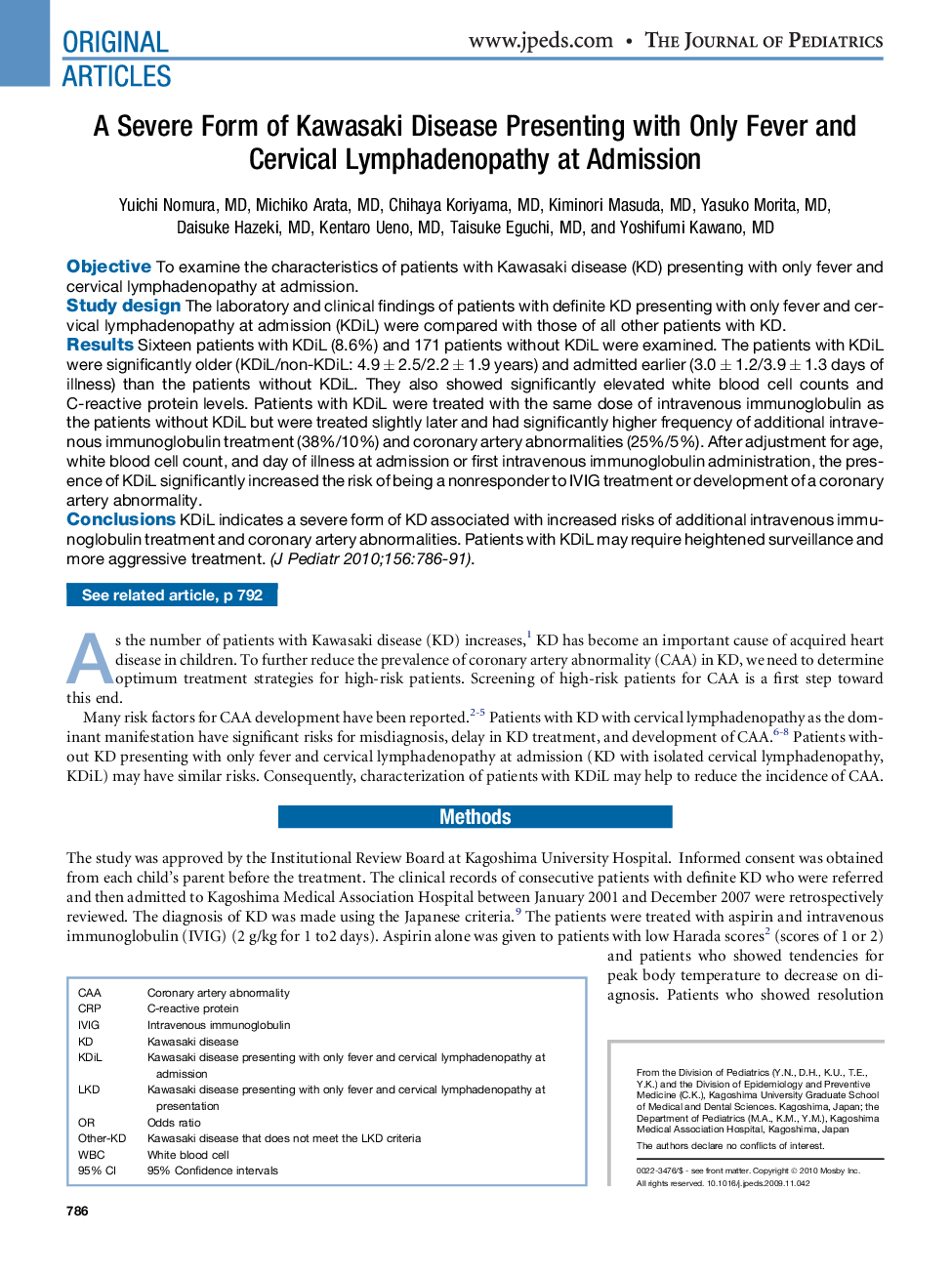| Article ID | Journal | Published Year | Pages | File Type |
|---|---|---|---|---|
| 4168204 | The Journal of Pediatrics | 2010 | 6 Pages |
ObjectiveTo examine the characteristics of patients with Kawasaki disease (KD) presenting with only fever and cervical lymphadenopathy at admission.Study designThe laboratory and clinical findings of patients with definite KD presenting with only fever and cervical lymphadenopathy at admission (KDiL) were compared with those of all other patients with KD.ResultsSixteen patients with KDiL (8.6%) and 171 patients without KDiL were examined. The patients with KDiL were significantly older (KDiL/non-KDiL: 4.9 ± 2.5/2.2 ± 1.9 years) and admitted earlier (3.0 ± 1.2/3.9 ± 1.3 days of illness) than the patients without KDiL. They also showed significantly elevated white blood cell counts and C-reactive protein levels. Patients with KDiL were treated with the same dose of intravenous immunoglobulin as the patients without KDiL but were treated slightly later and had significantly higher frequency of additional intravenous immunoglobulin treatment (38%/10%) and coronary artery abnormalities (25%/5%). After adjustment for age, white blood cell count, and day of illness at admission or first intravenous immunoglobulin administration, the presence of KDiL significantly increased the risk of being a nonresponder to IVIG treatment or development of a coronary artery abnormality.ConclusionsKDiL indicates a severe form of KD associated with increased risks of additional intravenous immunoglobulin treatment and coronary artery abnormalities. Patients with KDiL may require heightened surveillance and more aggressive treatment.
